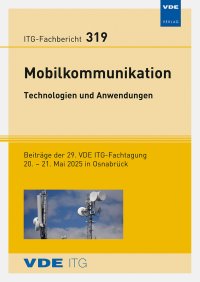Enhancing Physical Layer Key Generation Leveraging Reconfigurable Intelligent Surfaces
Konferenz: Mobilkommunikation - 29. ITG-Fachtagung
20.05.2025-21.05.2025 in Osnabrück
Tagungsband: ITG-Fb. 319: Mobilkommunikation – Technologien und Anwendungen
Seiten: 6Sprache: EnglischTyp: PDF
Autoren:
Dai, Wenqing; Mallikarjun, Sachinkumar B.; Munoz, Yorman; Lipps, Christoph; Schotten, Hans D.
Inhalt:
Physical Layer Key Generation (PLKG) is a promising approach to contribute to the security and resilience of current and upcoming wireless communication technologies. Randomness and characteristic influences on the reciprocal radio channel are utilized to establish symmetric and secret keys. However, particularly in static and block-fading scenarios, this arbitrariness is difficult to guarantee, significantly degrading the efficiency and entropy of the wireless channel. One technology frequently discussed within the development of Sixth Generation (6G) cellular networks is the so-called Reconfigurable Intelligent Surfaces (RISs), passive reflective elements with the ability to dynamically manipulate the physical environment. Due to these properties, RISs are also particularly attractive for security applications. Therefore, this work focuses on the initial step of PLKG and evaluates the potential of RISs to improve its reliability and security in multi-path scenarios. The main security metrics discussed in this work are based on Channel State Information (CSI). The results indicate the great potential of RISs as a security improvement at the physical layer, with a significantly increased Key Generation Rate (KGR) compared to a transmission not supported by RIS, especially in scenarios with obstacles or low entropy. These results provide valuable insights into the design of RIS-assisted Secret Key Generation (SKG) schemes and highlight their applicability in future wireless communication systems operating in dynamic, constrained, or adversarial environments.


